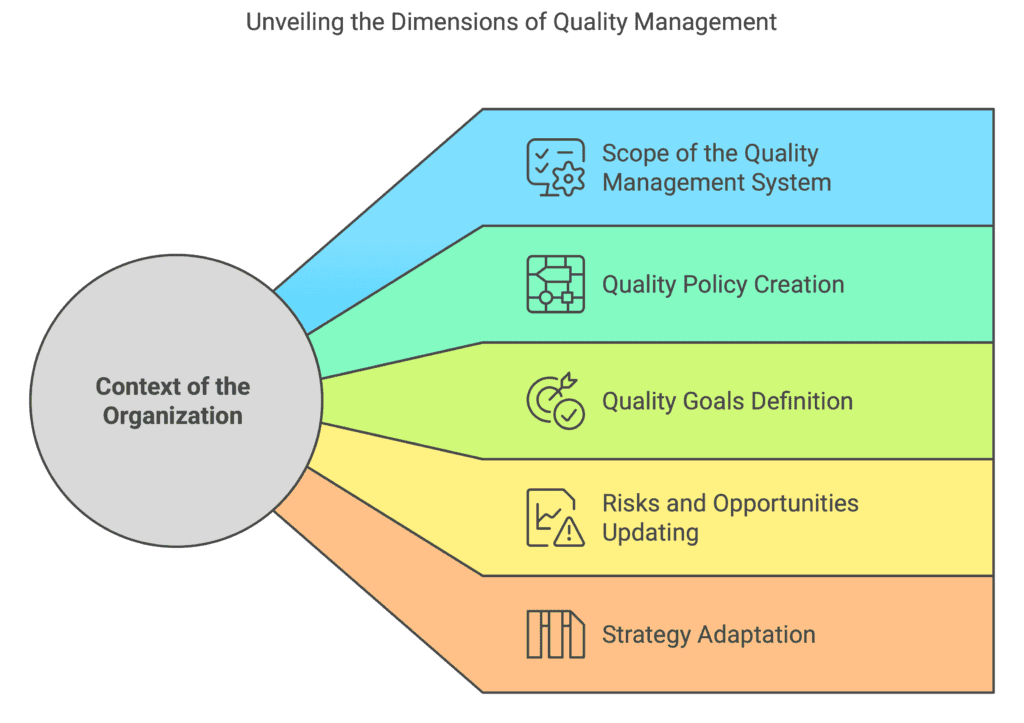In a competitive business environment, understanding context of the organization in which a company operates is crucial to its success. Why? Because the correct application of knowledge about it can help the organization achieve strategic goals and results. Finally significantly influencing the company’s operations.
Under the ISO 9001 norm (referenced also by the IATF 16949 standard), context of the organization is one of the key elements that should be considered in the quality management process.
Context of the organization – how is divided?
It includes an analysis of the external and internal environment.
Understanding the external context can facilitate consideration of factors from the legal, technological, competitive, market, cultural, social, economic, as well as international, national, regional, and local environments [1].
Analyzing these aspects enables us to better understand how external factors may influence the organization’s activities, strategies, and results.
On the other hand, considering issues related to the values, culture, knowledge, and operations of the organization can facilitate understanding of the internal context. This allows for a better understanding of how the organization works internally, what its goals, values, and culture are, and what its strengths and weaknesses are.
In summary, analyzing both the external and internal context is very crucial. Why? Because by this we can understand the organization and its environment, which can lead to better decisions and strategies. It is also important to remember that we use context in other activities related to the quality management system. We can mention here, among others, its consideration during creation:
– scope of the quality management system
– creating the Quality Policy
– defining quality goals
– updating risks and opportunities
– allows you to adapt strategies and actions to changing conditions

How to manage updates to context?
To discuss the proper management of the context of the organization, we must first define the timeframe under consideration.
If we are in the process of implementing a quality management system according to ISO 9001 or IAT 16949, defining the context is a straightforward matter. The context typically gets defined in a meeting with top management, including business process owners.
However, if the organization has already implemented the quality management system, it has two options. The first option applies when the organization has not updated the context for a long time due to various reasons. In such a scenario, I recommend organizing a meeting with relevant stakeholders, similar to when defining the context of the organization for the first time.
When we have a relatively up-to-date document, managing the organizational context can be included in one of the preparatory stages for the quality management review. We can achieve this by sending communications to interested parties. Each party can then check whether their section of the context requires updating.
By doing this, we avoid wasting time during the management review, as we can present a synthesis based on the information sent by other participants.
In this way, we meet the requirements of ISO 9001 point 9.3.2 b).
On the Free Tools page, you can download a free, editable Excel form for your own use.
Document name: Context of the organization – Excel Form
Dariusz Kowalczyk
Would you like to know more? Follow me on LinkedIn.
Literature:
1. ISO 9000: 2015, Quality management systems.


